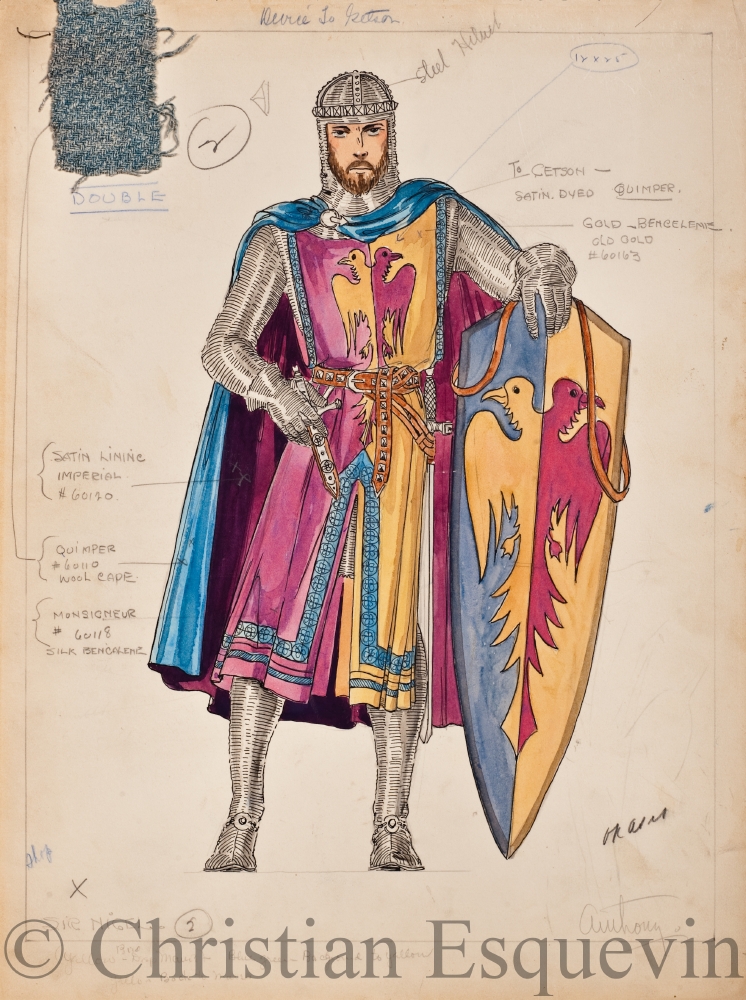Designing Hollywood: Sketches from the Christian Esquevin Collection explores five themes: Studios, Genres, Designers, Wardrobe, and Stars. Today's post highlights the behind-the-scenes work of the many workers who made real the costumes envisioned by costume designers. If you haven't read the other posts in this series, catch up here.
See Designing Hollywood at the FIDM Museum Tuesday-Saturday, from 10am-5pm through November 1, 2014.
 The Adventures of Robin Hood (Warner Brothers, 1938)
The Adventures of Robin Hood (Warner Brothers, 1938)
Designer: Lon Anthony (1899-1958)
Actor: Claude Rains (1889-1967) as “Prince John”
Watercolor & pencil on illustration board with fabric sample
L2014.2.64
Studio wardrobe departments teemed with anonymous workforces of pattern-makers, fitters, seamstresses, tailors, embroiderers, dyers, cobblers, and milliners who translated the designers’ simplest ideas into the grandest creations.
Costume construction began with a dress form made to the specific measurements of a star. Draping and flat patterning commenced in cotton muslin, continually adjusted through multiple fittings until perfection was achieved in both the costume’s structure and the actor’s figure. The garment was then de-constructed—its muslin pattern pieces next cut out in fine fabrics sometimes specially woven or imported, and finally reassembled.
Finishing included hand-applied crystal beading, metallic embroidery, and delicate feather work, beautifully captured in camera close-ups. Nothing was too extravagant, if the plot or producer demanded it.
Persuasive skills on the part of the designer were sometimes necessary to soothe a difficult actress who might not appreciate the pinch of a corset or weight of a heavy train, but thanks to these un-trumpeted, highly skilled wardrobe workers she was magically transformed from a frumpy secretary into a glamorous sophisticate ready to catch her onscreen millionaire.
With the young and dashing Errol Flynn in the title role, The Adventures of Robin Hood chronicles the exploits of Robin Hood as he robs the rich and gives to the poor. Errol Flynn insisted on performing many of his own stunts, including the swordfight scenes. This cinematic version of the classic Robin Hood tale has the distinction of being the first Warner Brothers movie filmed in three-strip Technicolor, a process which results in saturated colors. The colorful costumes worn by Robin Hood and his arch-enemy Prince John (pictured above) benefitted from Technicolor, appearing in rich contrast to the background settings.

